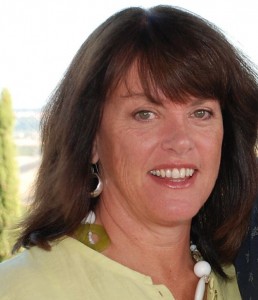 Warning: this is much longer than intended; read at your own pace or jump to Tessa’s bio below.
Warning: this is much longer than intended; read at your own pace or jump to Tessa’s bio below.
August 17, 2010. While doing the tourist thing at Windsor Castle with my daughter and her friend, we stopped for lunch at the Drury House Restaurant reputed to be Windsor’s oldest established restaurant and the former home of Nell Gwyn, Charles II’s mistress. We had already finished lunch and were tucking into a tea table full of house made desserts: a creamy cheesecake with a crushed biscuit crust and lemon notes, warm scones with clotted cream and strawberry jam and chocolate pudding with it’s own little pitcher of double cream when I felt a vibration on my thigh. It was an email from EnteroLab.
I had long suspected my partner, Ernie, had gluten issues. In fact, he was often plagued with digestive symptoms from cow’s milk products and for reasons unknown to us. His youngest had recently been tested for gluten sensitivity and her results showed a gluten-sensitive marker from each parent. Aha! I told him to take the test. He said no. I told him I would take the test too if he would. He said yes. (It’s like tricking your kids into doing stuff they don’t want to.)
Unlike older types of blood tests that only test for celiac disease, this test —known as the Gluten/Antigenic Food Sensitivity Stool/Gene Panel — requires sending in a bit of poo, frozen poo specifically, to Entero lab (there’s a kit; it’s scientific). You go about our life, eating with abandon for a few weeks and then you get a vibration on your thigh. So there we were at Drury’s when my mobile started to whir.
I remember opening the email and scanning the results. Gluten, casein, soy, chicken egg, and baker’s yeast. Wow, poor Ernie I thought. But wait, these were my results! Lordy, I didn’t have digestive symptoms like he did. I thought I was that I wasting my money even taking the test and that my results would be negative across the board. I was only doing the test to get him to do it. How could this be? And I have a celiac gene to boot. Crap I thought as I polished off the cheesecake and spoonfuls of clotted cream.
So how does a woman who remembers nearly every meal they ate, and what their companions ate, adjust to living without some of the most basic ingredients — gluten, dairy/casein, eggs, bakers yeast and soy?
Simply, my relationship with food and how I eat had to change. I haven’t lost my passion for food, but the choices I make now come with a raft of consequences I was not aware of. I want to fix the damage that’s been done and prevent more in the future. I want to get to a healthier place but still enjoy really good food, despite the food intolerances.
I’ve been cooking for almost 50 years. I started when I dislocated and broke my ankle in 6th grade and ended up homebound with crutches and a wheelchair (which had its upsides). I had to turn my kitchen end-over-end to accommodate what I could no longer eat. It was a bit like moving from San Francisco or New York to the middle of nowhere. Eventually you get a compass reading and start to find your way.
Writing recipes for food I’ve cooked for years is harder than I thought it would be. I’m more of an intuitive, shoot-from-the-hip kind of cook than a step-by-step kind of gal. Writing how-to books at Sunset Books years ago (How to do Needlepoint, a big seller) I’m hoping will help. My goal is to become a damn decent food writer and photographer who can provide great recipes and useful information for people living without some of their favorite foods and for those of you who just like to eat.
The other bit I hope to get out of writing this blog is to get and be healthy for a long time. My Dad, Alexander the Greek, died at 76 from Lewy Body disease, a very debilitating neurological condition that manifested in both Alzheimer and Parkinson-type symptoms that led to what I think was a premature death. Was it related to gluten issues? Food issues may have compromised his health. I know I got a celiac gene from one parent and a gluten intolerant marker from the other. It was my father who reached for the bottle of Rolaids after every meal for as long as I can remember (which now they say is very bad because it screws with your stomach acid that declines as you get older anyway). My mother, on the other hand, can pop a spoonful of wasabi down her gullet and her eyes don’t even water. That said she has very bad arthritis. I can’t prove my Dad might have lived a longer, healthier life if he ate differently, but I’m changing what I eat just in case.
I’m not a medical expert but I can safely say everyone I know who has given up a food they are (or think they are) intolerant to has noticed improvement on some level.
By the way, Ernie is gluten intolerant; as is my daughter Tess (see below); also Ernie’s number two, three, and sixth daughters are; so is one of his grand children and most likely more of his daughters too, but they don’t want to admit it. Among the ten of us at least six have given up gluten and have seen positive results because of it.
On the health, wellness, and nutrition side, I have had a keen interest in alternative therapies and diet since my 20’s. I read Adelle Davis in the ‘70’s and ultimately found a path to Functional Medicine which has helped me identify my food intolerance issues. I’m no expert, but I hope you find what I write about, especially what I cook, is useful to you whether it’s simply a new recipe or a link that turns on a light.
Tess.
As the daughter of the self-proclaimed Intolerant Foodie, I was bound to inherit some of her characteristics, both genetically and psychologically. It’s a nature/nurture thing. Much to my dismay I inherited a bevvy of food allergies paired with a love of good food that walks that fine line between foodie and fanatic.
Of course I could not escape nasty clutches of gluten-intolerance that claim at least 40% of the nation and my mother, I also discovered allergies to corn and soy. While I have learned to live quite happily without these things, I must say, being someone who doesn’t eat meat, is gluten-intolerant and can’t eat soy or corn kind of sucks.
Yet I have not only come to terms with these inconveniences, but have begun to embrace different kinds of dieting. Most recently I limited my diet to six core ingredients: vegetables, fruits, nuts, eggs, fish and beans. “What? How do you live?” you ask with confusion wavering in your voice. Well, my proverbial friend, I probably feel better than you a majority of the time. I got sick once the entire past year and I blame that on two weeks straight of partying upon my arrival in Ireland where I was studying abroad. My blog posts will include recipes I have adapted, restaurants where I found food I could eat and my experiences living with intolerances. They say that “the stuff that is worst for you tastes the best”, I say “they” have obviously never had quinoa.



